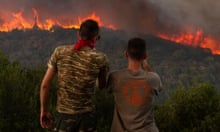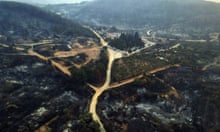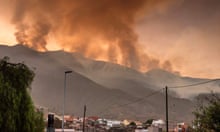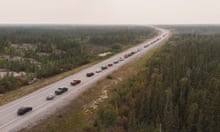The Spanish government has declared the Sierra de la Culebra mountain range in Zamora province a catastrophe zone after a fire destroyed 30,000 hectares (74,000 acres) of woodland, raising fears for the future of the local wolf population.
The decision gives the Castilla y León region immediate access to €2m (£1.7m) in economic recovery funds to help make good the damage caused by the worst fire in a decade, which destroyed a huge swathe of the 600 sq km biosphere reserve in north-west Spain.
The fire broke out a week ago and spread quickly, fanned by high winds and unseasonably high temperatures. More than 650 firefighters from all over Spain battled to contain the blaze aided by planes and helicopters before it was finally brought under control on Sunday.
“The main problem now is soil erosion caused by the wind and rain,” Luis Suárez of WWF said. “It’s fundamental that we stabilise the soil and restore the area in a way that will make it more resistant to fire in the future, which involves sustainable activities such as traditional livestock grazing and responsible forest management.”
As well as the loss of around 25,000 hectares of woodland, there are fears for the future of the local wolf population, one of Spain’s largest. It is thought the adults will have escaped the flames, but the young were only a few weeks old and may not have survived.
“The females usually give birth in mid-May and so the cubs wouldn’t be very mobile,” Suárez said. “It’s very unlikely that the females would have been able to get all the young out of the lairs but it’s too early to say for sure.”
It is thought that the area was home to 10 wolf packs, each occupying its own large territory, much of which has now been destroyed.
Zamora has been held up as a role model for the co-existence between farmers with wolves. A ban on hunting the animals in north-west Spain, where most of the packs are concentrated, only became law last month, despite opposition from rightwing legislators.
There are about 300 packs in Spain, each made up of up to eight wolves, the largest population in western Europe.
The sierra is also home to large populations of deer, wild boar, mountain cats, otters and golden eagles. Observation towers have been built, giving visitors a rare opportunity to watch wolves in the wild.










